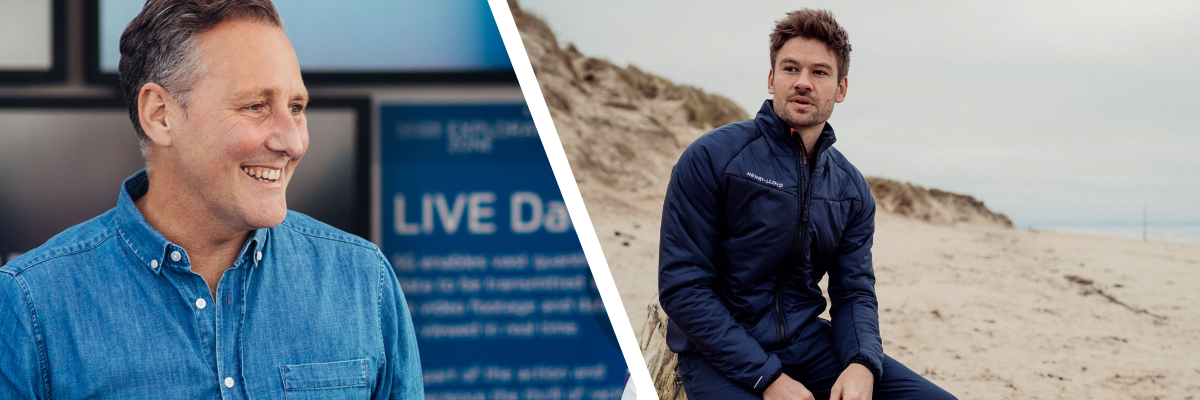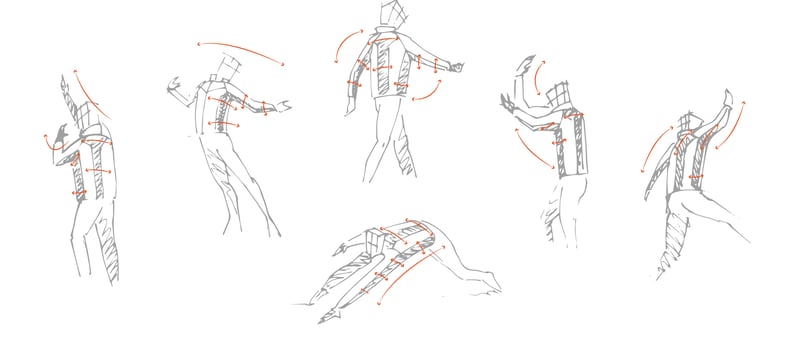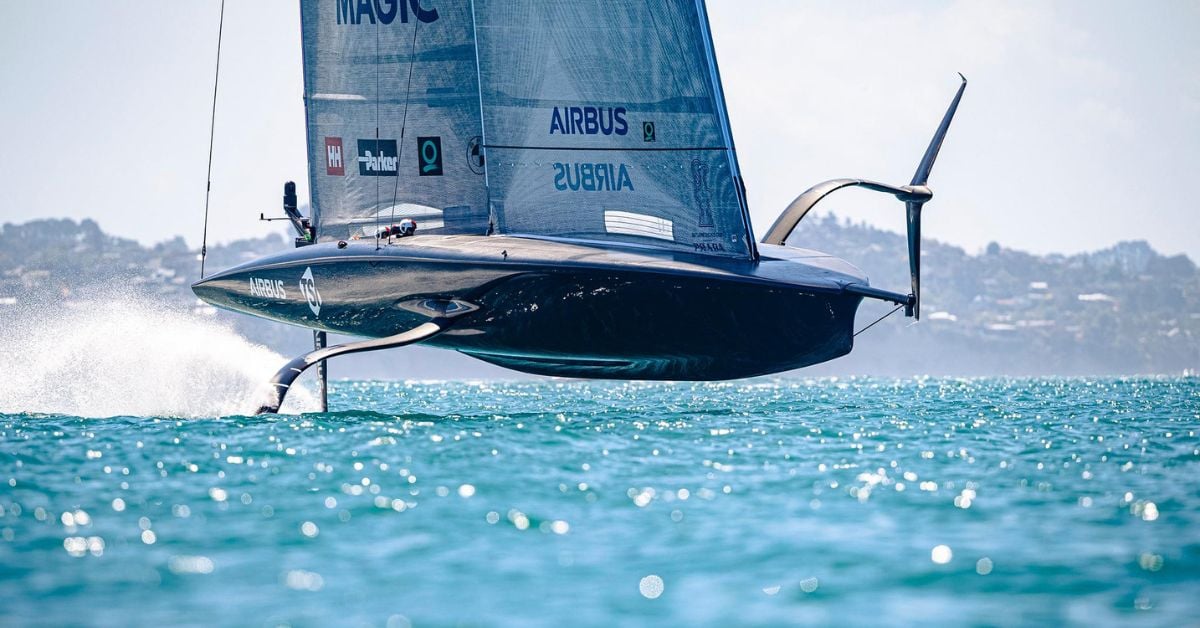Marine Clothing 2.0: Innovating for Sustainability
 Kim Hollamby
Kim Hollamby
Employing bio-science and developing multi-role longer serving ranges are ways in which marine clothing can use future technology and design to enhance sustainability. We speak to Henri Lloyd’s CEO Graham Allen to learn more.
There was a time when much of the focus on the latest marine clothing products to hit the shelves was on the technology of the fabrics they utilised. The transition from old, sweat-inducing, uncomfortable oilies to modern, breathable, durable, and flexible clothing was as revolutionary as the switch from wood to GRP for boat construction.
The design of marine clothing features and construction techniques progressed in parallel to improve comfort, warmth, style and weatherproofing. The use of multiple technical layers became commonplace. But where do we go from here, and how will the marine clothing sector drive for greater sustainability?
Henri Lloyd CEO Graham Allen is a good person to ask, having worked for the business for many years and within the performance clothing fabric sector before that. The 60-year-old company he heads has already pushed a long way down the road to address areas where it can improve its environmental responsibility.
More than 95 per cent of its new products are recycled, organic or zero waste – it won a DAME Design Awards category for its Blue Eco range as far back as 2009. Packaging no longer contains virgin oil-based materials, and much of its production is from its factory in Poland, reducing transport emissions to many of its key markets.
Obvious sustainability improvements
“We started to improve sustainability with the things that had the biggest immediate impact,” Graham explains. “People often ask about recycled materials, and yes, we use a lot of those. It’s part of the solution, but having products with circularity that last is the bigger goal.
“The best thing we can do to help the environment is make a product that lasts a long time – 80 per cent of the carbon footprint is in the production of the garment. If you can make it last 10, 20 or 30 years, that reduces impact. We regularly get customers with Henri Lloyd clothing still in use after 30 years and one who wrote in recently saying he had retired his jacket after 55 years!
It’s one thing to make a garment last from a quality point of view, but you also need to look at design and its influence. Our Blue Eco range was ahead of its time 15 years ago. It was genuinely circular, but we had to make design compromises to enable easy disassembly at the end of its life and that made it appear less attractive than other products when we were selling it.
Longer product range cycles
“The required innovation in this age is to continue to deliver the performance and style that people expect but in a more sustainable way,” Graham continues. “One of the things we’re doing differently now is to plan for product ranges to last for three to five years and feature styling with sporting elegance that appeals and doesn’t quickly age. We’re not changing every season to encourage people to make frequent purchases. If there’s a hole in the range, we’ll fill that gap, but we’re trying to follow a model that minimises wastage and overproduction.
“If you must discontinue many products at the end of each season, you’re selling it off cheaply somewhere. It leads to you buying more materials and making more. Our decision to go with a long-term product lifespan means there is less reason for anyone to discount the products in the market.
“The margins on clothing aren’t huge in the marine marketplace – nothing like the mark-ups you see in fashion. We want to ensure our retailers have a good time with us. Our ambition is to work with those who deliver excellent service and don’t use price as the principal weapon for selling.
Repairing for longer service life
“We also offer repair services in Europe – if customers damage their Henri-Lloyd clothing, we’d like it returned to use. Perhaps a patch should be seen now as a badge of honour to show that you have behaved responsibly. The future owes something to the past where this kind of thing would have been much more typical. Clothing was expensive in the 1960s and 70s compared to earnings – so there was an incentive to make things last. Clothing is much cheaper as a ratio of typical pay today, but that may go the other way as resources become scarce.
“It may seem counter-intuitive from a commercial perspective to plan for people to buy less. But if people fall in love with your product, they’ll buy more of what they purchase from you and less with others.”
Multi-purpose clothing
Graham also identifies that performance clothing will likely become more agnostic in use. Yachting is recognised to be the second harshest environment when designing jackets and trousers that offer weather protection, after motorcycling, which tops the league due to the higher speed impact of water on the wearer.
If you design for sailing and the clothes are comfortable and flexible, they are potentially suitable for other pursuits that traditionally had dedicated channels. Henri-Lloyd researched this thought with sailors 18 months ago, and the generally accepted view was that base and mid-layers should be suitable for any sport.
Applying bio-science to marine clothing design
A further way to drive longevity and universality of use is technology and analysis to make clothing so comfortable that you never want to part with it. The January 2024 launch of Henri Lloyd’s new Smart-Therm mid-layer jacket and gilet demonstrates how a closer study of physiological performance can optimise how marine clothing is made for extended use. Its brief was to create something you could wear non-stop without taking it off for two weeks.
The design and technology focus here was on two key areas – improving comfort and removing friction.
To optimise the Smart-Therm range, Henri-Lloyd studied heat maps of the body to create a design where the maximum heat radiation points – across the shoulders, under the arms and down the spine – have panels with high wicking properties to control temperature and perspiration along with greater flexibility to enable natural movement of the body.

Cooler areas of the body where you tend to get chilled faster, such as around the lower torso, have a higher insulation ratio. Flattened seams prevent friction, and low chafe features include a super soft collar and cutaway neck design. Surfaces in contact with outer layers are shinier to prevent inter-layer grab.
“Part of what we’re trying to do is to understand how the body works and functions,” Graham says. The better the clothing system you can deliver, the longer it will last. The more successful you can get at this kind of thing, the less inclined somebody will be to change their clothes.”
.jpg?h=400&iar=0&w=1200)

